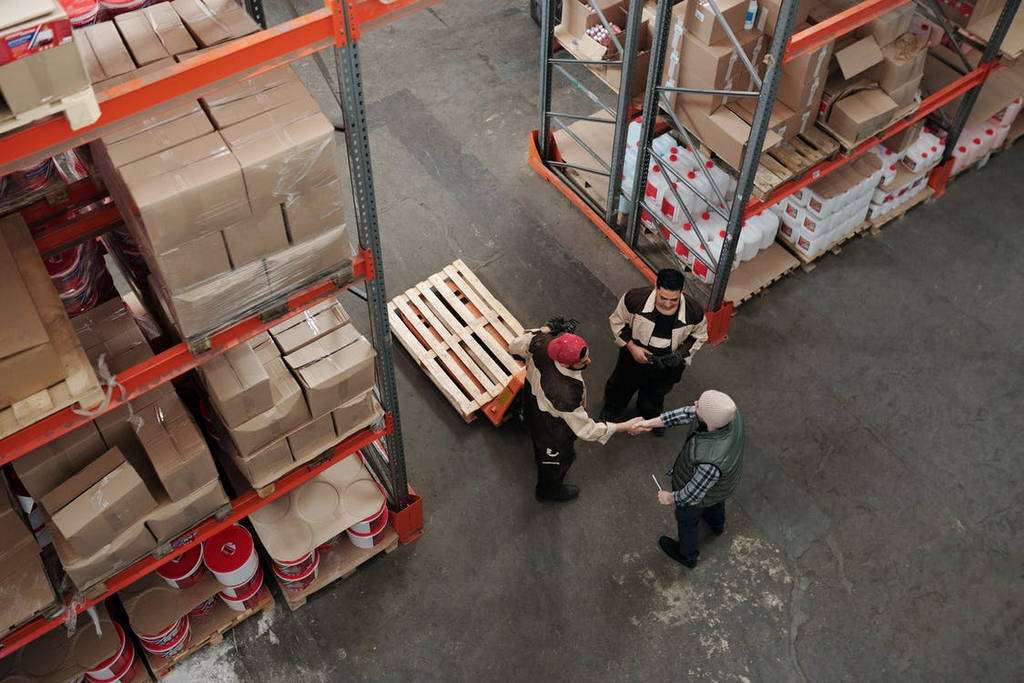Preparing and shipping products for Amazon FBA can be a daunting task, especially if you need a climate-controlled warehouse.
Not sure where to start? You’re not alone. FBA prep can be confusing and overwhelming, but it doesn’t have to be.
We’ve put together this guide to help you choose the right FBA prep center & warehouse for your needs. By following our tips, you’ll be able to find the perfect center that fits your budget, schedule and temperature needs.
Use this outline to skip to any section of this page:
- What is a climate-controlled warehouse for FBA prep?
- How temperature & humidity affects storage & shipping
- Benefits of using a climate-controlled warehouse for Amazon FBA prep
- Most sensitive items to temperature & humidity levels
- Expanding product selection
- How can I find a climate-controlled FBA prep warehouse that meets my needs?
What is a climate-controlled warehouse for FBA prep?
A climate-controlled warehouse is a facility where the temperature and humidity are regulated to protect the products inside from adverse weather conditions.
This is especially important for items that are sensitive to changes in temperature or humidity, such as food, pharmaceuticals, and electronics.
Climate-controlled warehouses can be either indoor or outdoor facilities. Indoor warehouses use heating and cooling systems to maintain the desired temperature and humidity levels, while outdoor warehouses use insulated roofs and walls to keep the interior temperature stable. In both cases, the air quality is also monitored to ensure that it meets the needs of the products inside.
How temperature & humidity affects storage & shipping
Temperature and humidity play a significant role in the storage and shipping of products. When it comes to product safety, both temperature and humidity must be considered. Inappropriate levels of either can cause damage to products, making them less safe for consumers.
Temperature is a measure of how hot or cold something is. Products must be stored within a certain temperature range to avoid spoilage or damage. When it comes to shipping, items must be packed in a way that maintains the appropriate temperature for the product.
Keep in mind – if the temperature is not maintained, the product could spoil or freeze, causing it to be unusable.
Humidity is a measure of the amount of water vapor in the air. High humidity can cause products to become moldy or rusty. Low humidity can cause products to lose moisture and become brittle. In order to prevent damage, products must be stored within a specific humidity range. Humidity also affects how products are shipped. Packing materials must be chosen that will maintain the correct humidity level for the product being shipped.

Benefits of using a climate-controlled warehouse for Amazon FBA prep
There are several benefits of using a climate-controlled warehouse:
- It protects the products from damage due to extreme weather conditions.
- It keeps the products in a consistent environment, which can help maintain their quality and extend their shelf life.
- It allows for greater flexibility in terms of shipping and receiving shipments from around the world.
- It helps companies comply with government regulations governing the storage of food, pharmaceuticals, and other sensitive products.
Most sensitive items to temperature & humidity levels
Temperature and humidity levels are incredibly important when it comes to the storage of products. High temperatures can cause products to spoil or become unusable, while high levels of humidity can lead to the growth of mold or fungus. For this reason, many products need to be stored in a climate-controlled warehouse.
Some of the most sensitive products to temperature and humidity levels include food items, artwork, and electronics. If these items are not stored in the correct conditions, they can become ruined and could potentially cause harm to those who consume them or use them.
For this reason, it is important that businesses take into account the temperature and humidity levels when storing their products.
How can I find a climate-controlled FBA prep warehouse that meets my needs?
When it comes to choosing an FBA prep company, one of the most important factors to consider is the climate-controlled warehouse. Unfortunately, most prep companies do not have this option, which can lead to problems during the winter months.
For example, if you are in a cold climate and your products are stored in a non-climate-controlled warehouse, they could potentially freeze and be ruined. In addition, if you are in a hot climate and your products are stored in a non-climate-controlled warehouse, they could potentially spoil or become damaged.
That’s why it’s so important to do your research before choosing an FBA prep company. Make sure to ask about their warehouse conditions and whether or not they have a climate-controlled option. This way, you can be sure that your products will be stored in a safe and secure facility, regardless of the weather conditions outside.

Expanding product selection
When choosing a climate-controlled warehouse for your FBA storage and prep, it’s important to consider all of the products you sell. Some Amazon products need warmer temperatures, while others need cooler temperatures. If you’re not sure which warehouse is best for your products, many sellers prefer to default to climate-controlled warehousing – so that you don’t have to switch later on.
Remember – climate-controlled warehousing is a great option for sellers who want to ensure that their products are stored in the right environment to maintain quality and prevent negative reviews and defects.
This type of warehouse can help protect your inventory from damage due to extreme weather conditions, and it can also help keep your products in good condition until they’re ready to be shipped to Amazon customers.
If you’re looking for a climate-controlled warehouse that meets the needs of your Amazon business… here are a few more tips:
- Consider the location of the warehouse. You’ll want to choose a warehouse that’s close to your home or business, so you can easily access your inventory.
- Make sure that the warehouse has the right climate-control features for your products.
- If you’re not sure which climate-controlled warehouse is right for you, contact an Amazon selling expert or advisor. They can help you find the right facility and ensure that your products are stored in the best possible environment.

